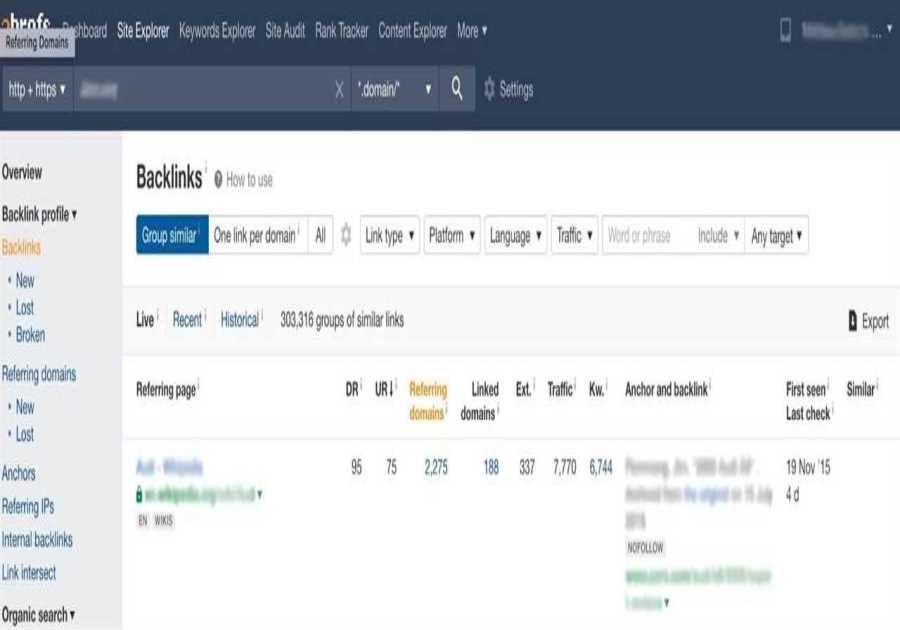
The post Why You Should Look after Your Archives appeared first on ProBlogger.

Every post you publish is another potential source of traffic. And so obviously the more posts you write, the more traffic you’ll get.
But while creating new content is always a good thing, there’s another way to bring extra traffic to your site that will take far less effort.
Updating your archives.
Your personal traffic gold mine
If you’ve been blogging for a while, you may have hundreds or even thousands of posts sitting in your archive. And each one can potentially bring traffic to your site.
But if you haven’t looked at those posts since you first wrote them, they may be doing more harm than good. How do you think your readers will feel if they come across a post with broken links and out-of-date information?
The good news is that with a little bit of work you can update those posts and bring more traffic to your blog. And it will be a lot quicker than writing a new post from scratch.
Eating the elephant
As the saying goes, the way to eat an elephant is one bite at a time. And the same goes with updating your archive.
You should be aiming towards updating all your posts. But that’s going to take a while, especially if have hundreds or even thousands of posts in your archive. So pick one and update it, and then keep repeating the process until you’ve tackled them all.
So where’s a good place to start?
1. Posts that are popular
Check your analytics and look for posts that are getting plenty of traffic. It may be coming from Google, social media, or even another blog. Wherever it’s coming from, improving that particular post will certainly pay off.
2. Posts that aren’t popular
Have you ever written a post you worked really hard on, only to find it didn’t do anywhere near as well as you thought it would? Now’s the time to see what you can do to give it a new lease on life – a new headline, better visuals, etc.
3. Posts you wrote when you first started out
Chances are you’ve come a long way since you started blogging. And so you should probably take a look at your early posts and see if they need updating. Yes, you might cringe at some of them. But now’s your chance to make them better (and see how far you’ve come).
Now what?
Now that you’ve chosen a post to update, what should you do with it? Your immediate thought might me to scrap it completely and start again, especially if it’s a really old post. But chances are the changes don’t need to be quite that drastic. Here are some things you can try.
1. Fix the obvious mistakes
Start by fixing the obvious problems – factual errors, spelling mistakes, and links that are either broken or outdated.
2. Update your content
While nostalgia buffs might enjoy reading about how things were five years ago, most people want information that’s current. So if you have any statistics or other time-sensitive information, update it.
But don’t discard the old information completely. You can use it to make comparisons and show how things have changed over the years. “In the past five years, Facebook has grown by x%, while Twitter has grown by y%.”
3. Add more depth
This is a great opportunity to add more depth to your post, especially if you know a lot more about the topic than you did when you first wrote it. You could add more examples, quotes from experts, extra points, or even an alternative view you didn’t consider back then.
4. Improve the visual elements
How does you post look? It might be time to replace the image (or add one if it’s purely text), add subheadings, and turn those long lists of comma-separated items into bullet points.
5. Add some ‘Further reading’ links
If you’ve written other posts about the topic, create a ‘Further reading’ section and add links to those other posts. (And while you’re at it, do the same for those other posts and add the one you’re updating now.)
You could also add links to posts on other blogs that cover the same topic. Who knows? The other blogger might do the same for you.
6. Optimise it for SEO
The ‘rules’ of SEO have changed a lot of the years. And so what you did to improve your post’s ranking back then (e.g. keyword stuffing) may no longer work. Depending on what you did back then, you may need to tweak the content a little. You may even decide to focus on better keywords to improve its ranking.
7. Optimise it for social sharing
If you’ve been blogging for a while, some of your early posts might ask your readers to share them on social media platforms that no longer exist. (Some of my early posts asked people to share them on MySpace.) And of course, there are lots of new platforms you can ask them to share your posts on as well.
8. Provide a call to action
How did you end your early posts? Did you write a nice conclusion and leave it at that? You might want to tweak your endings to include a call to action, whether it’s to subscribe, read other posts on the same topic, check out a product or service you’re offering, or something else.
Now, repeat the process
As I said earlier, you should be aiming towards updating all your posts. And the only way to get through them all is to make updating them part of your routine.
Have you created a weekly timetable for creating posts, editing and posting them, hanging out on social media, and so on? Then it’s time to add another timeslot where you select a post from your archive and update it.
Even if you only do it once a week, in a year you’ll have 52 more posts driving traffic to your site. And rather than driving people away, they’ll draw your readers in. Not only will you get more traffic, you may also get more subscribers.
So go through your archives, pick a post, and give it a new lease on life.
And let us know how it all went in the comments.
Photo by Markus Winkler on Unsplash
The post Why You Should Look after Your Archives appeared first on ProBlogger.






By: Darren Rowse
Title: Why You Should Look after Your Archives
Sourced From: Original article available: problogger.com/look-after-your-archives/
Published Date: 2021 03 18
Did you miss our previous article...
https://internetmarketingworldwide.com/web-design/squarespace-vs-wix






